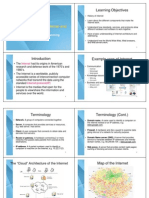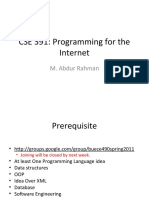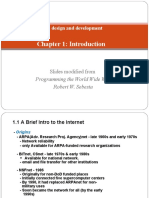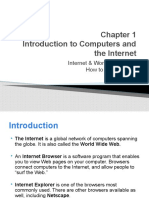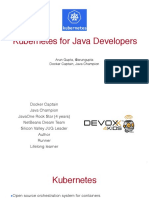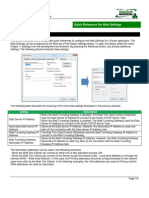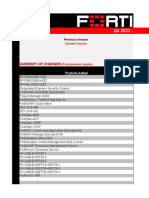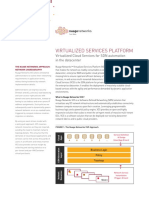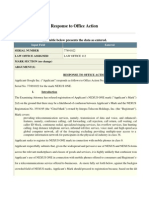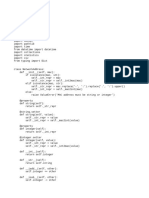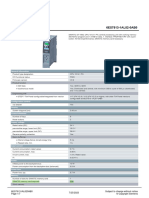0% found this document useful (0 votes)
158 views30 pagesCSSE280: Introduction To Web Programming: Introductions, Internet, WWW, HTML Intro
This document provides an overview and agenda for an introductory course on web programming. The course will cover front-end development using HTML, back-end development using Node.js, and building data-driven applications with MongoDB and REST APIs. The agenda includes introductions, installing Visual Studio Code, an overview of the internet and World Wide Web, and an introduction to HTML.
Uploaded by
Gamal BohoutaCopyright
© © All Rights Reserved
We take content rights seriously. If you suspect this is your content, claim it here.
Available Formats
Download as PDF, TXT or read online on Scribd
0% found this document useful (0 votes)
158 views30 pagesCSSE280: Introduction To Web Programming: Introductions, Internet, WWW, HTML Intro
This document provides an overview and agenda for an introductory course on web programming. The course will cover front-end development using HTML, back-end development using Node.js, and building data-driven applications with MongoDB and REST APIs. The agenda includes introductions, installing Visual Studio Code, an overview of the internet and World Wide Web, and an introduction to HTML.
Uploaded by
Gamal BohoutaCopyright
© © All Rights Reserved
We take content rights seriously. If you suspect this is your content, claim it here.
Available Formats
Download as PDF, TXT or read online on Scribd
/ 30

